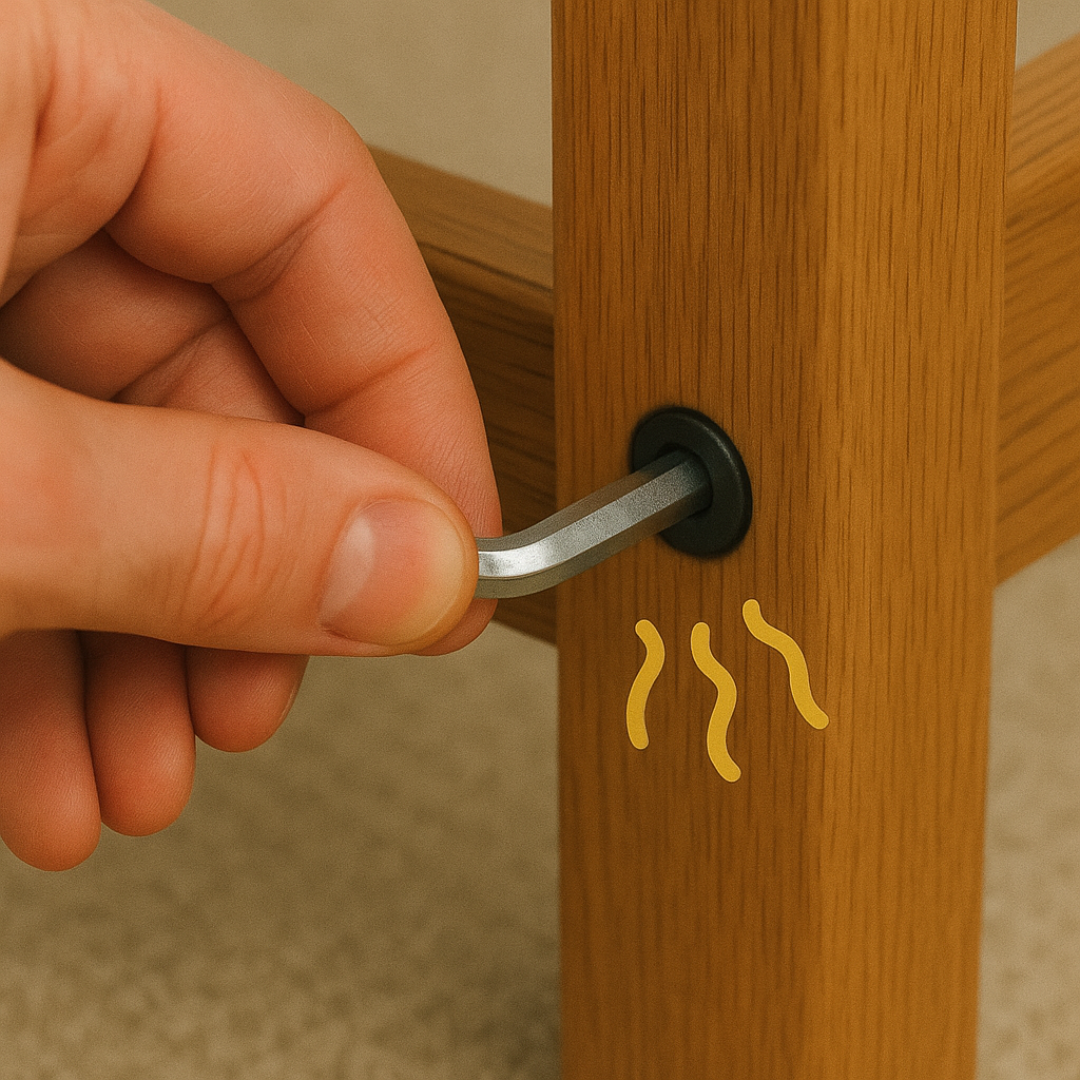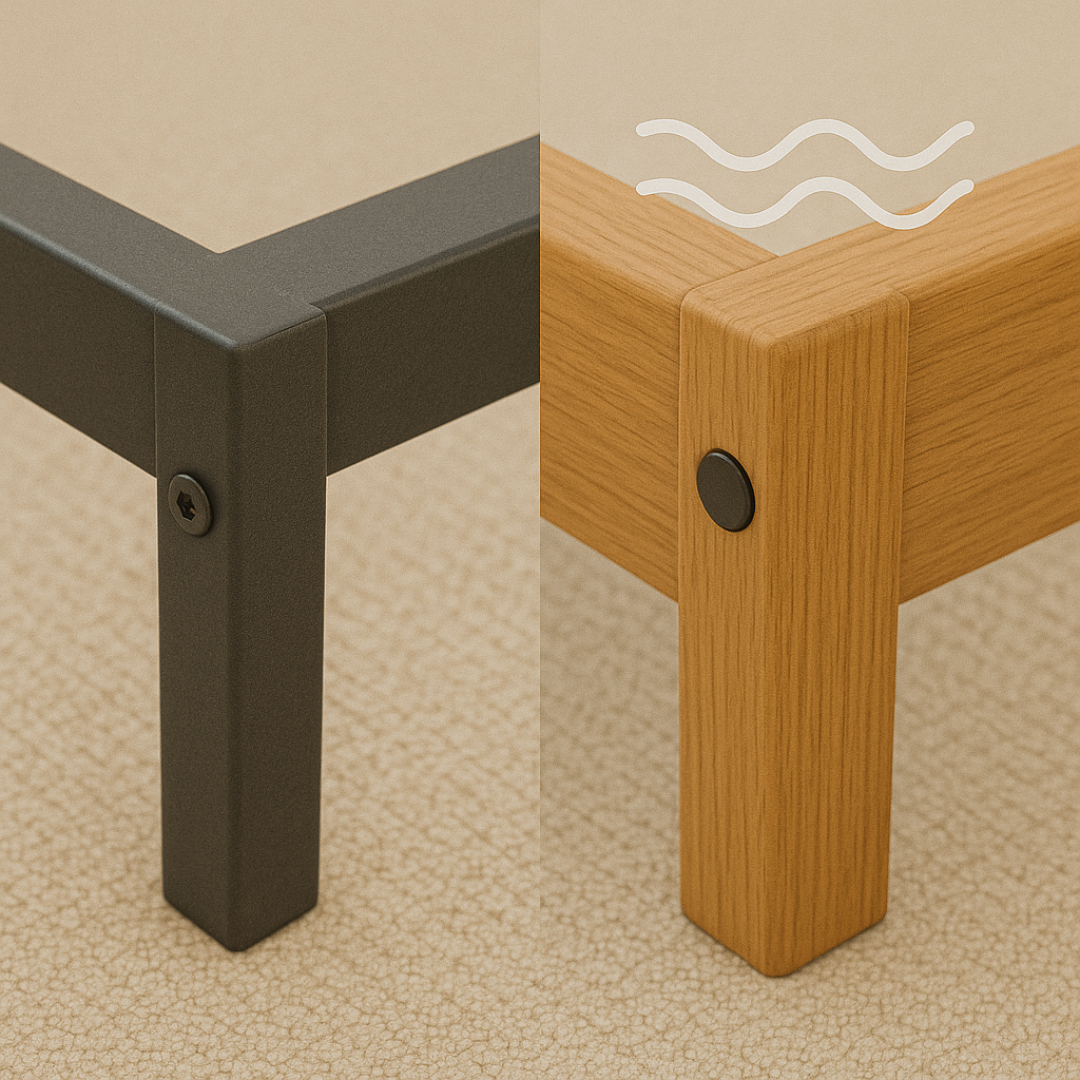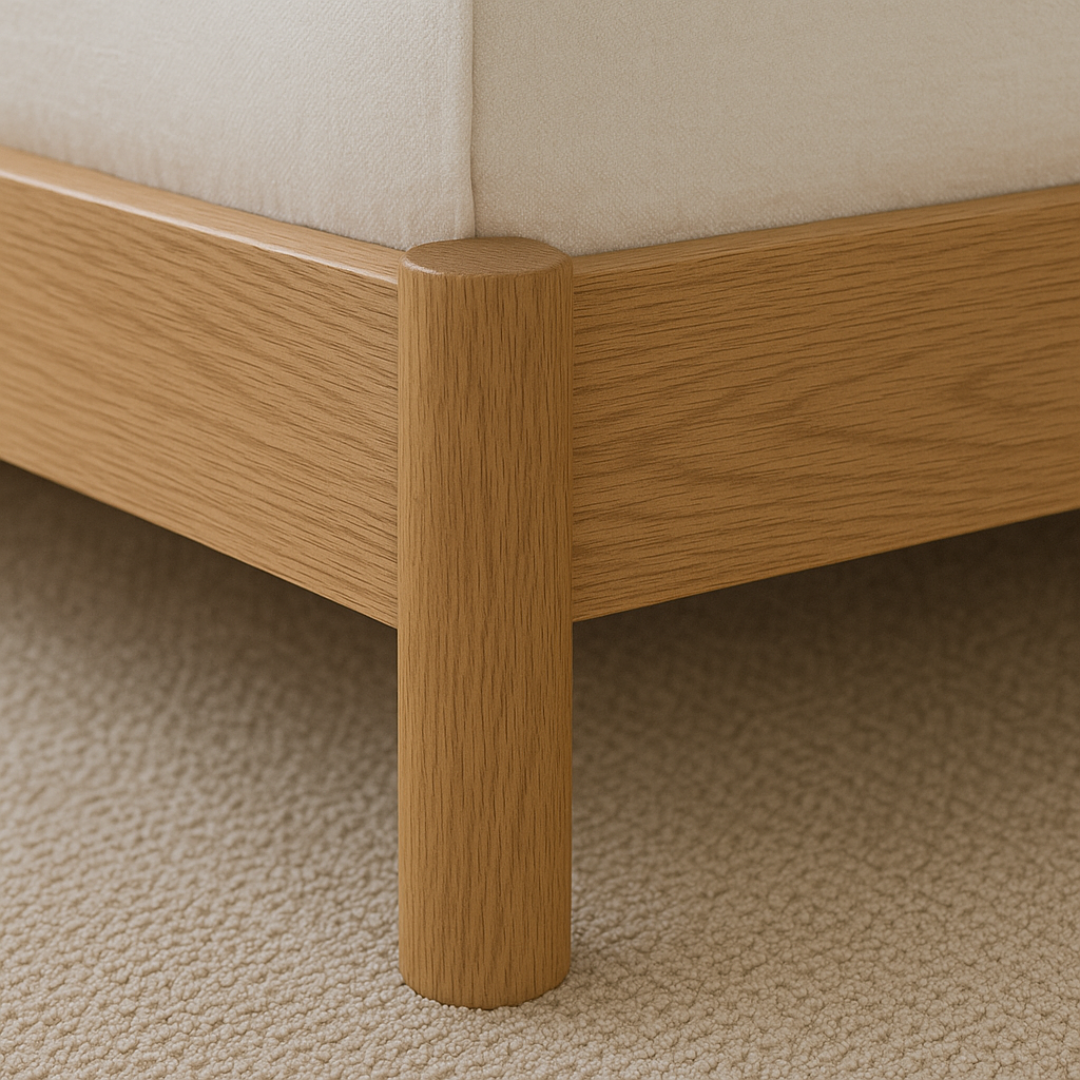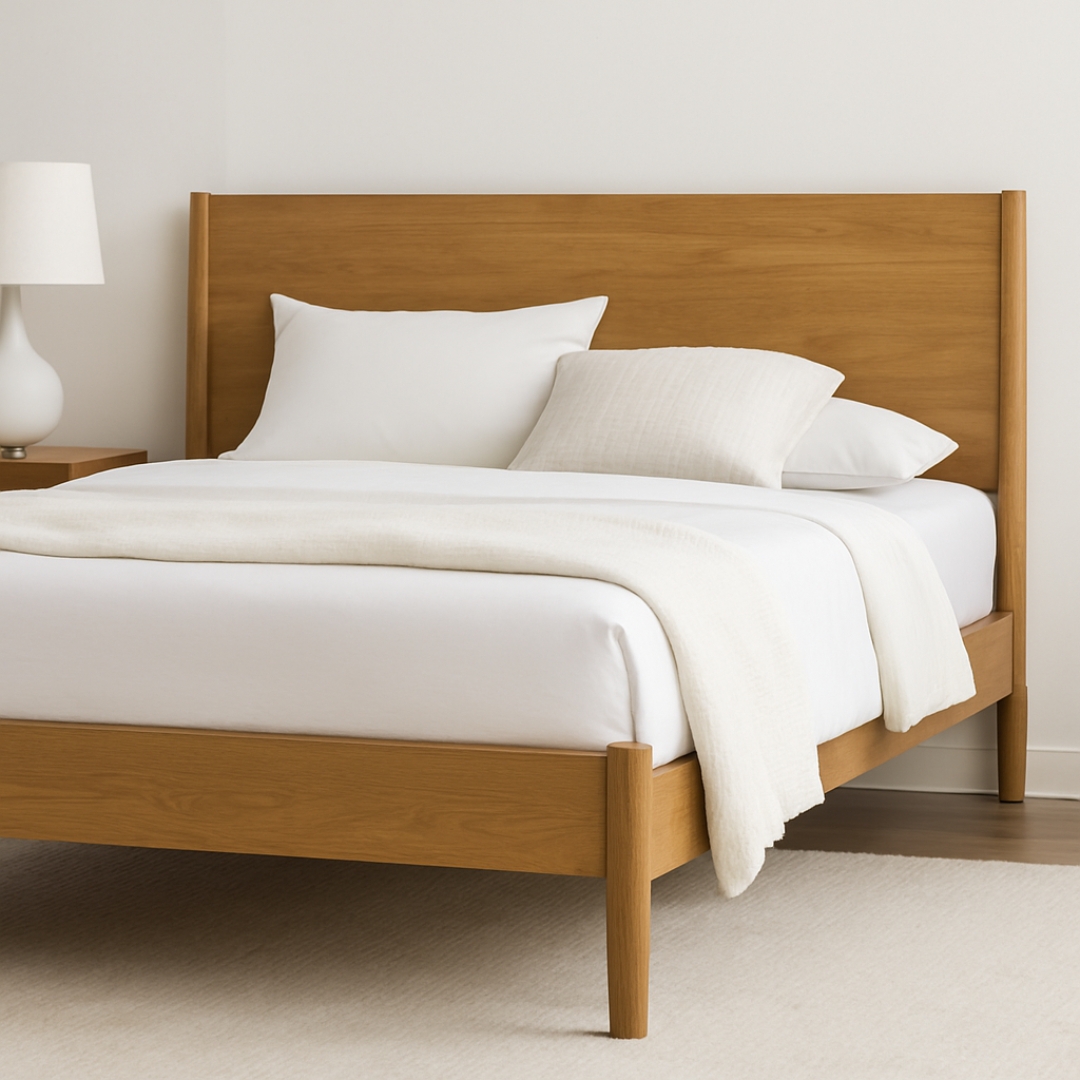Why Bed Frame Noises Happen (And How to Stop Them)
A squeaky or creaky bed frame usually comes from friction, loosened joints, or unstable parts. Understanding the root cause helps pinpoint the fix—and keep bedtime silent.
Common Bed Frame Noises & Their Causes
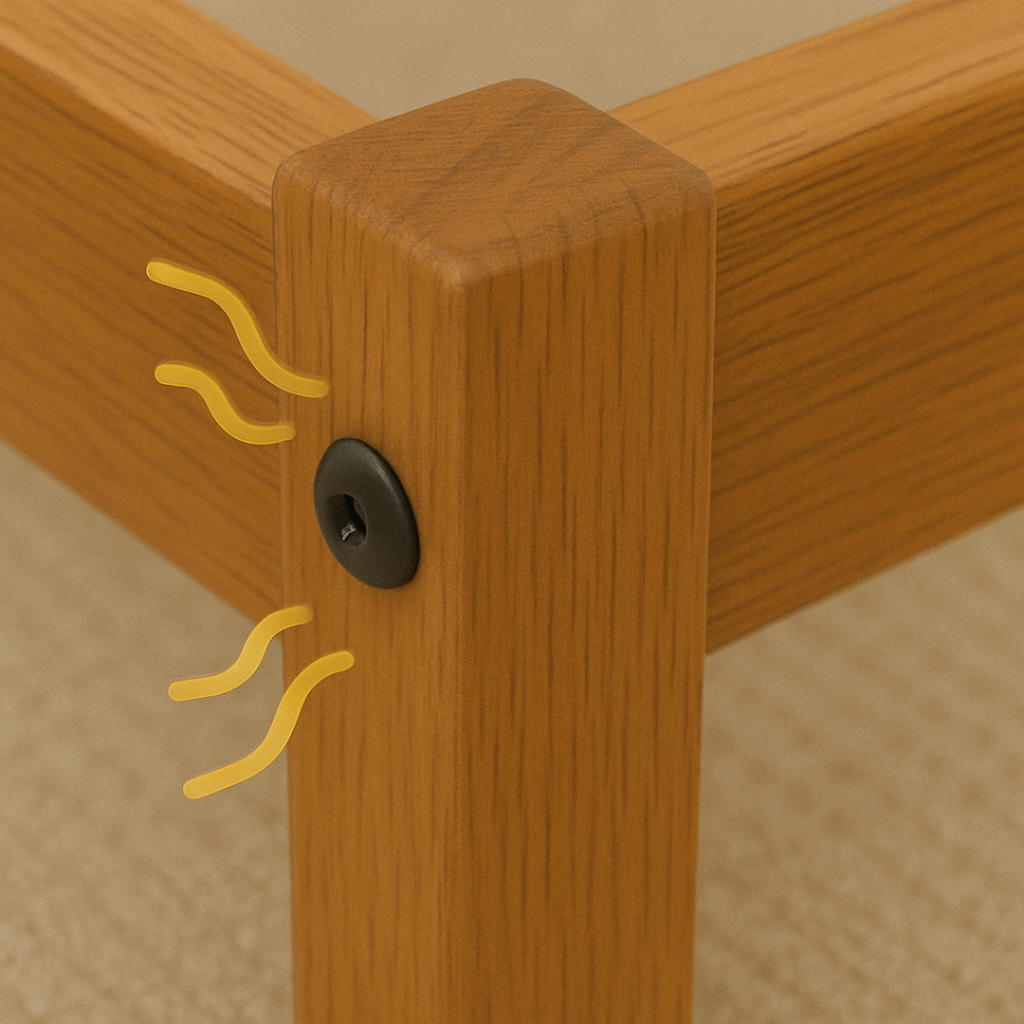
Metal-on-Metal Creaks
When paint or coating wears off, metal fittings rub and produce squeaks.
Fix: Add rubber washers or nylon bushings between contact points.
Wooden Joint Creaking
Wood expands and contracts, loosening joints over time.
Fix: Tighten bolts or use wood‑safe glue at mortise or dovetail areas.
Slat Shifting
Slats can rub the side-rail or flex under pressure.
Fix: Install felt or rubber pads between slats and rails.
Loose Hardware
Bolts can loosen with movement, causing clunks.
Fix: Check every 3 months and tighten using a torque wrench to prevent overtightening or noise.
What Makes a Bed Frame Quiet? 5 Key Features
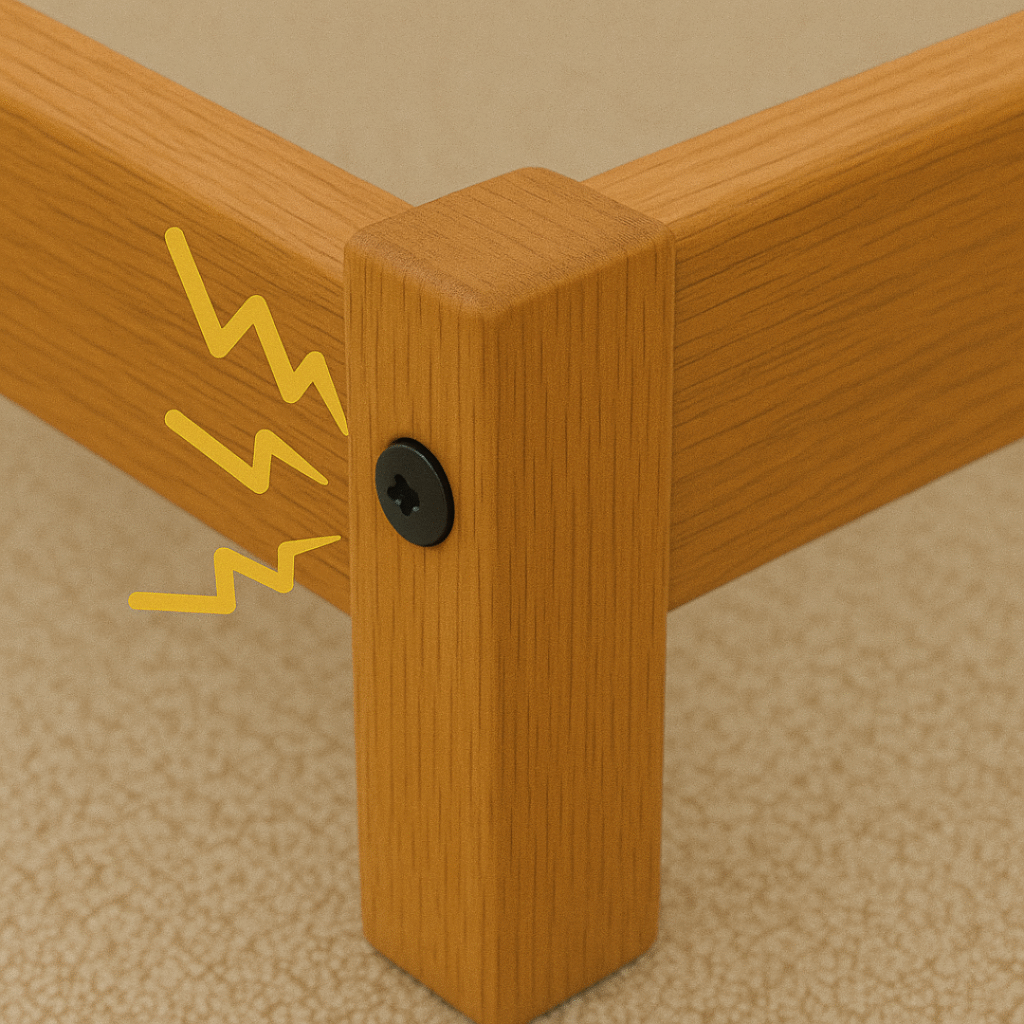
Anti‑Squeak Hardware
Frames with nylon bushings, felt washers, rubber grommets, or pre-lubricated bolts isolate noise and metal friction.
Solid Construction
Choose frames that are welded steel or reinforced hardwood to prevent movement at joints.
Slat Integrity
Opt for slats spaced ≤ 3″ and secured with clips or padding to stop slat noise.
Center-rail Support
A strong center beam with legs distributes weight and minimizes flex that leads to squeaks.
Proper Floor Contact
Use non-slip rubber feet or felt pads under legs to prevent frame movement and generate grip.
Real‑World Fixes: How to Fix a Squeaky Bed Frame

Tighten & Torque All Bolts
Use a torque wrench and follow manufacturer specs. Retighten every few months—not just when you hear a squeak.
Add Noise‑Reducing Layers
Rubber pads, felt tape, or floor mats under slats and connectors reduce friction and noise transfer.
Reinforce Joint Areas
Apply thread‑locking compound on bolts to prevent loosening over time—even with movement.
Use Slat Clips or Caps
Secure slats in place with plastic or rubber clips to prevent shifting and rattling.
Inspect Frame Connections
Every few months, inspect welds or wood joints. Repair cracks or reinforce weak points as needed to prevent future noises.
Prevention: Building Peace from Day One
- Choose frames with sound-isolation features out of the box
- Follow assembly instructions carefully, tightening bolts gradually
- Test for movement noise when new—re-tighten preemptively
- Maintain a schedule: retighten hardware and inspect padding every 3–6 months
Why A Quiet Bed Frame Improves Sleep Quality (Stealth Tip)
No disturbances = deeper, more restorative sleep. Best for light sleepers or shared spaces where every creak matters. Plus, anti-noise measures protect next‑door neighbors in apartments.
Conclusion
A quiet bed frame combines strong design, noise‑proof parts, tight assembly, and periodic checkups. Whether choosing a new frame or fixing your current one, focus on ant-noise hardware, slat stability, and centre support. Put in a few minutes today for silent, peaceful nights—and share or comment if this guide helped!
FAQs About What Makes a Bed Frame Quiet
Why does my bed squeak when I move?
It’s usually loose joints or metal rub—retighten bolts and add bushings to solve it.
What makes a durable, quiet bed frame?
Strong materials (steel/hardwood), anti-squeak hardware, solid slat spacing, and center support are key.
How do you fix a squeaky metal bed frame?
Tighten bolts, use rubber washers, apply thread-lock, and maintain joints regularly.
Are wooden bed frames quieter than metal ones?
Naturally yes—but only if joints are tight and hardwoods are high quality.
Do rubber feet help a bed frame stop squeaking?
Yes—rubber or felt pads under legs prevent floor slippage and minimize structure noise.

